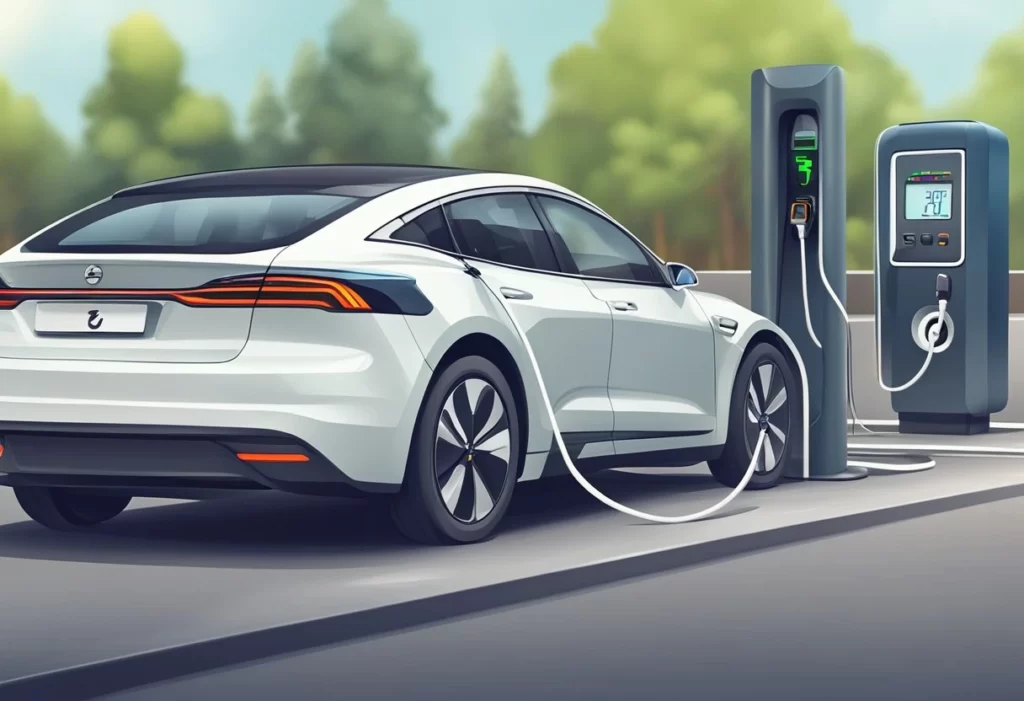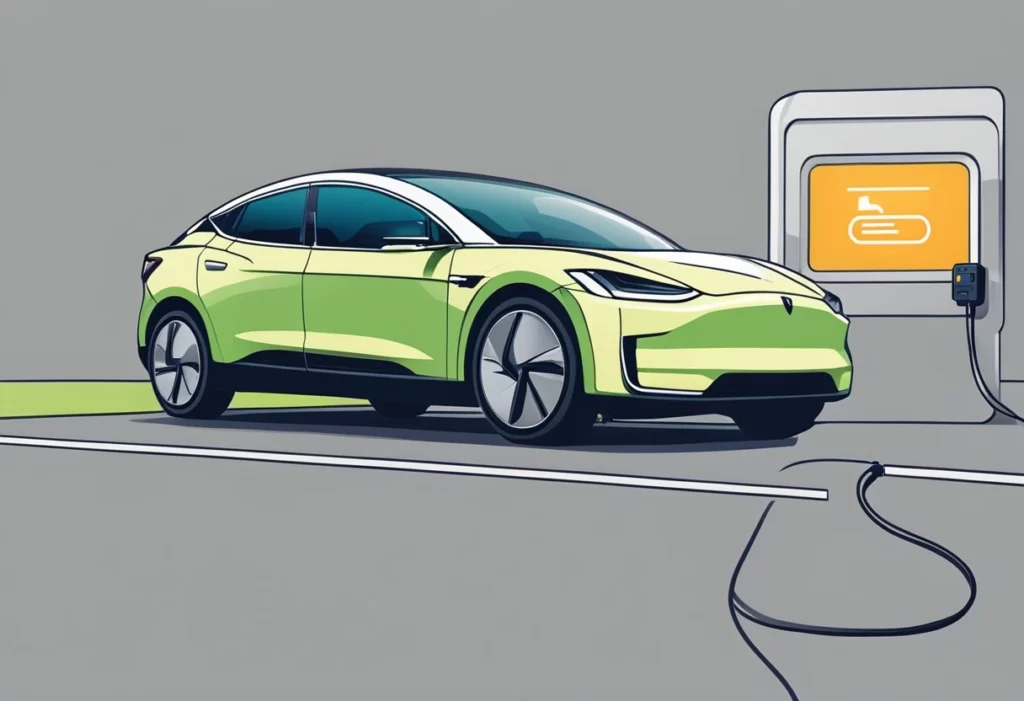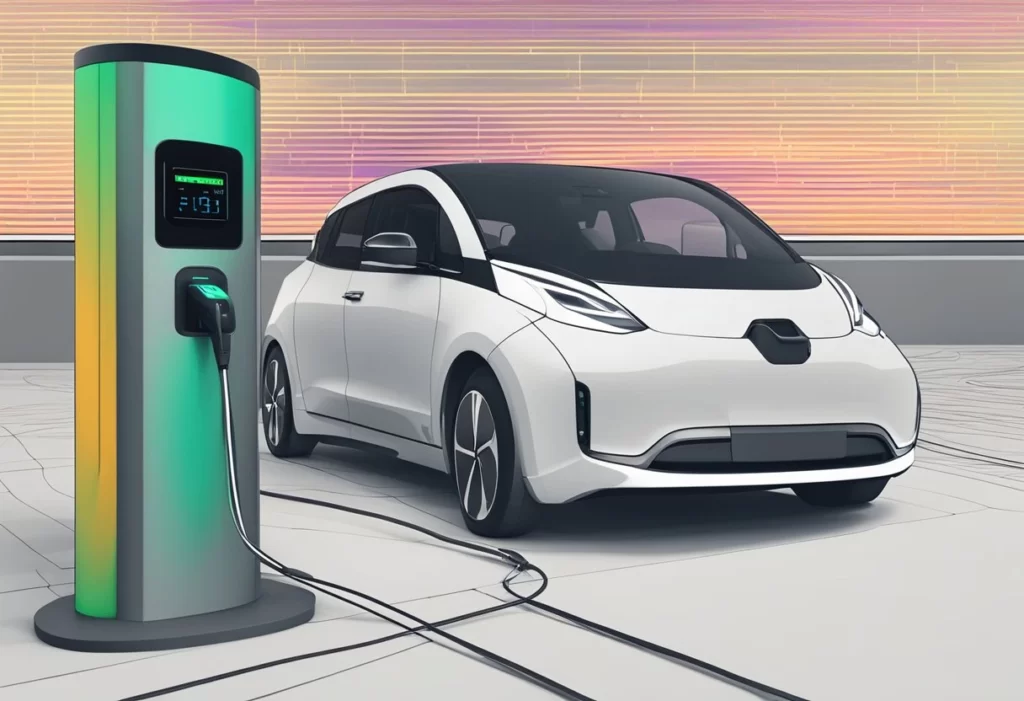Impact of EV Voltage on Your Car’s Charging Speed: Electric vehicles (EVs) have been growing in popularity in recent years as more people become aware of their environmental benefits. One of the biggest challenges facing EV owners is the limited range of their batteries and the time it takes to recharge them. Charging speed is a critical factor in the adoption of EVs, and the faster the charging time, the more convenient it is for drivers to use their vehicles for longer distances.
To understand the impact of EV voltage on charging speed, it’s essential to first define electric vehicles. EVs are cars that run on electricity, and they have several advantages over traditional gasoline-powered vehicles. EVs are more environmentally friendly since they produce fewer emissions, and they are cheaper to operate since electricity is less expensive than gasoline.
EV voltage is a critical factor in determining the charging speed of an electric car. The higher the voltage, the faster the charging time. However, there are several factors that affect EV charging speed, including the battery’s state of charge, battery deterioration, ambient temperature, and power level of the charging equipment. In this article, we will explore the impact of EV voltage on charging speed and provide tips for maximizing EV charging efficiency.

Understanding EV Voltage
Electric vehicles (EVs) are powered by rechargeable batteries that store energy and provide power to the electric motor. The voltage of an EV battery determines how much energy it can store and how fast it can charge. There are three different levels of EV voltage: Level 1, Level 2, and DC fast charging.
EV Voltage Levels
- Level 1: This is the slowest charging option and is typically used for charging at home. Level 1 charging uses a standard 120-volt AC outlet and can take up to 20 hours to fully charge an EV battery.
- Level 2: This is a faster charging option and is commonly found at public charging stations, workplaces, and homes with dedicated charging equipment. Level 2 charging uses a 240-volt AC outlet and can take anywhere from 4 to 8 hours to fully charge an EV battery, depending on the vehicle and battery size.
- DC Fast Charging: This is the fastest charging option and is typically found at public charging stations along highways and major travel routes. DC fast charging uses a 480-volt direct current (DC) connection and can charge an EV battery to 80% in as little as 30 minutes.
Relationship Between EV Voltage and Charging Power
The higher the voltage of an EV battery, the faster it can charge. This is because the charging power is directly proportional to the voltage. For example, a 400-volt battery can charge twice as fast as a 200-volt battery, assuming the same charging equipment is used.
Charging Infrastructure for Each EV Voltage Level
The charging infrastructure available for each EV voltage level varies. Level 1 charging can be done using a standard 120-volt AC outlet, which is available almost everywhere. Level 2 charging requires a 240-volt AC outlet, which is less common but can be installed at homes and businesses. DC fast charging requires specialized equipment and is typically only found at public charging stations.
In conclusion, understanding EV voltage is important for maximizing charging speed and choosing the right charging infrastructure. The voltage of an EV battery directly affects how fast it can charge, and different levels of EV voltage require different charging equipment.

Impact of EV Voltage on Charging Speed
Electric vehicle (EV) charging speed is affected by the voltage of the charging system. The voltage determines how quickly the battery can be charged, and higher voltage charging systems generally result in faster charging times.
DC Fast Chargers
DC fast chargers are the fastest charging option for electric vehicles. They typically operate at 400-800 volts and can provide up to 350 kilowatts (kW) of power. These chargers can charge an EV battery to 80% capacity in as little as 20-30 minutes.
AC Level 2 Chargers
AC Level 2 chargers are the most common type of charging station for home and public use. They typically operate at 240 volts and can provide up to 80 amps of power. These chargers can charge an EV battery in 4-8 hours, depending on the size of the battery and the charging rate of the vehicle.
Level 1 Chargers
Level 1 chargers are the slowest charging option for electric vehicles. They typically operate at 120 volts and can provide up to 12 amps of power. These chargers can take up to 24 hours to fully charge an EV battery.
It is important to note that not all electric vehicles are compatible with all charging systems. Some EVs are designed to operate at specific voltage levels and may not be able to take advantage of higher voltage charging systems. Additionally, charging speed can be affected by the size of the battery, the age of the battery, and the temperature of the battery.
Overall, understanding the impact of EV voltage on charging speed can help electric vehicle owners make informed decisions about their charging options and ensure that they are able to charge their vehicles quickly and efficiently.
Factors Affecting EV Charging Speed
Electric vehicle (EV) charging speed is influenced by several factors. Here are some of the most important ones:
Battery Size
The battery size of an EV is a critical factor in determining the charging speed. A larger battery will take longer to charge than a smaller one, all other things being equal. Therefore, it is important to consider the battery size when choosing an EV. Larger batteries can also be more expensive and heavier, which can affect the overall performance of the car.
State of Charge (SOC)
The state of charge (SOC) of an EV battery is another important factor that affects charging speed. When the battery is nearly empty, it can be charged quickly, but as it approaches full capacity, the charging speed slows down. Therefore, it is best to charge the battery when it is low on charge to maximize charging speed.
Ambient Temperature
The ambient temperature can also affect the charging speed of an EV. Cold temperatures can slow down the charging process as the chemical reactions within the battery are negatively affected. On the other hand, high temperatures can speed up the charging process, but it can also lead to battery degradation over time. Therefore, it is important to park the car in a shaded area during hot weather and in a garage during cold weather to maintain optimal charging speed.
Charger Type
The type of charger used to charge an EV can also affect the charging speed. Level 1 chargers are the slowest, while Level 3 chargers are the fastest. Level 3 chargers are also known as DC fast chargers and can charge an EV to 80% capacity in as little as 30 minutes. However, not all EVs are compatible with Level 3 chargers, so it is important to check the car’s manual to see which charger types are compatible.
Power Grid Infrastructure
Finally, the power grid infrastructure can also affect the charging speed of an EV. If the power grid is overloaded, it can lead to slower charging speeds. Therefore, it is important to charge the EV during off-peak hours when the power grid is less congested.
In conclusion, several factors affect the charging speed of an EV. Battery size, state of charge, ambient temperature, charger type, and power grid infrastructure are some of the most important ones to consider. By understanding these factors, EV owners can optimize their charging speed and maintain their car’s battery life.

Choosing the Right EV Charger for Your Needs
When it comes to choosing the right EV charger for your needs, there are a few factors to consider. Here are some things to keep in mind:
Consider your driving habits
One of the most important factors to consider when choosing an EV charger is your driving habits. If you have a long commute or frequently take road trips, you’ll want a charger that can quickly charge your car’s battery. On the other hand, if you mostly use your car for short trips around town, you may not need a charger with a high charging speed.
Assess your budget
Another important factor to consider is your budget. EV chargers can range in price from a few hundred dollars to several thousand dollars, depending on the charging speed and other features. It’s important to assess your budget and choose a charger that fits within your price range.
Research different charger options
There are many different EV charger options on the market, ranging from basic Level 1 chargers to high-speed Level 3 DC fast chargers. It’s important to research different charger options and choose one that meets your specific needs. Some popular brands include ChargePoint, Tesla, and ClipperCreek.
Consult with an electrician
Before purchasing an EV charger, it’s important to consult with an electrician to ensure that your home’s electrical system can support the charger. An electrician can also advise you on the best location for the charger and any necessary installation requirements.
By considering your driving habits, budget, and researching different charger options, you can choose the right EV charger for your needs. Consulting with an electrician can also ensure that your charger is installed safely and properly.
Tips for Maximizing EV Charging Efficiency
When it comes to charging an electric vehicle (EV), there are several things you can do to maximize charging efficiency and get the most out of your charging sessions. Here are some tips to help you make the most of your EV charging experience:
Charge during off-peak hours
Charging during off-peak hours can help you save money on your electricity bill and reduce the load on the grid. Many utility companies offer lower electricity rates during off-peak hours, which can make a big difference in your overall charging costs. Additionally, charging during off-peak hours can help reduce the demand on the grid, which can help prevent blackouts and other power-related issues.
Utilize public charging stations when available
Public charging stations are becoming more common, and they can be a great way to keep your EV charged when you’re away from home. Many public charging stations are located in convenient places like shopping centers, parking garages, and other high-traffic areas. Using public charging stations can help you extend the range of your EV and avoid running out of power when you’re on the road.
Keep your EV battery well-maintained
Proper maintenance is essential for ensuring that your EV battery lasts as long as possible and operates at peak efficiency. To keep your battery in good condition, be sure to follow the manufacturer’s recommended maintenance schedule, which may include things like regular inspections, cleaning, and battery conditioning. Additionally, be sure to store your EV in a cool, dry place and avoid exposing it to extreme temperatures or other environmental conditions that could damage the battery.
Conclusion
In conclusion, EV voltage plays a significant role in determining the charging speed of your electric vehicle. The higher the voltage, the faster the charging speed. This is because higher voltage allows for more power to be transferred to the battery in a shorter amount of time.
It is important to note that voltage fluctuations can impact the performance of EV chargers, disrupting the charging process and reducing overall charging efficiency. Fluctuating voltage levels can lead to inconsistent charging rates, resulting in longer charging times or suboptimal charging levels.
To ensure optimal charging speed and efficiency, it is recommended to use a charger with the appropriate voltage for your EV. Additionally, it is important to monitor voltage levels and address any fluctuations promptly to avoid potential charging issues.
As the popularity of electric vehicles continues to grow, it is important for consumers to educate themselves on EV technology and charging options. Understanding the impact of EV voltage on charging speed is just one aspect of EV ownership, but it is a crucial one. By staying informed and making informed decisions, EV owners can ensure a positive and efficient charging experience.
FAQs About the Impact of EV Voltage on Your Car’s Charging Speed
What is the most common charging connector found on AC Level 2 devices?
The most common charging connector found on AC Level 2 devices is the J1772 connector. This connector is widely used in North America and is compatible with most electric vehicles.
What factors affect the charging speed of an electric vehicle?
Several factors affect the charging speed of an electric vehicle, including the battery size, the charging infrastructure, and the vehicle’s onboard charging system. The charging speed is also influenced by the power output of the charging station and the type of charging connector used.
Why does a higher voltage result in faster EV charging?
A higher voltage results in faster EV charging because it allows for more power to flow into the battery. The higher the voltage, the faster the charging speed. This is why DC fast charging stations, which typically operate at higher voltages than AC Level 2 charging stations, can charge an EV much faster.
Is DC charging harmful to Tesla vehicles?
No, DC charging is not harmful to Tesla vehicles. In fact, Tesla vehicles are designed to handle DC fast charging, which can charge the battery from 0 to 80% in as little as 30 minutes. However, frequent use of DC fast charging can degrade the battery over time, so it’s important to use it sparingly.
What are the current trends in the used EV market?
The current trends in the used EV market show that the demand for used EVs is increasing. As more people switch to electric vehicles, the supply of used EVs is also increasing. This has led to lower prices and more options for consumers looking to buy a used EV.
For more articles, you can visit our blog Techembounce.
